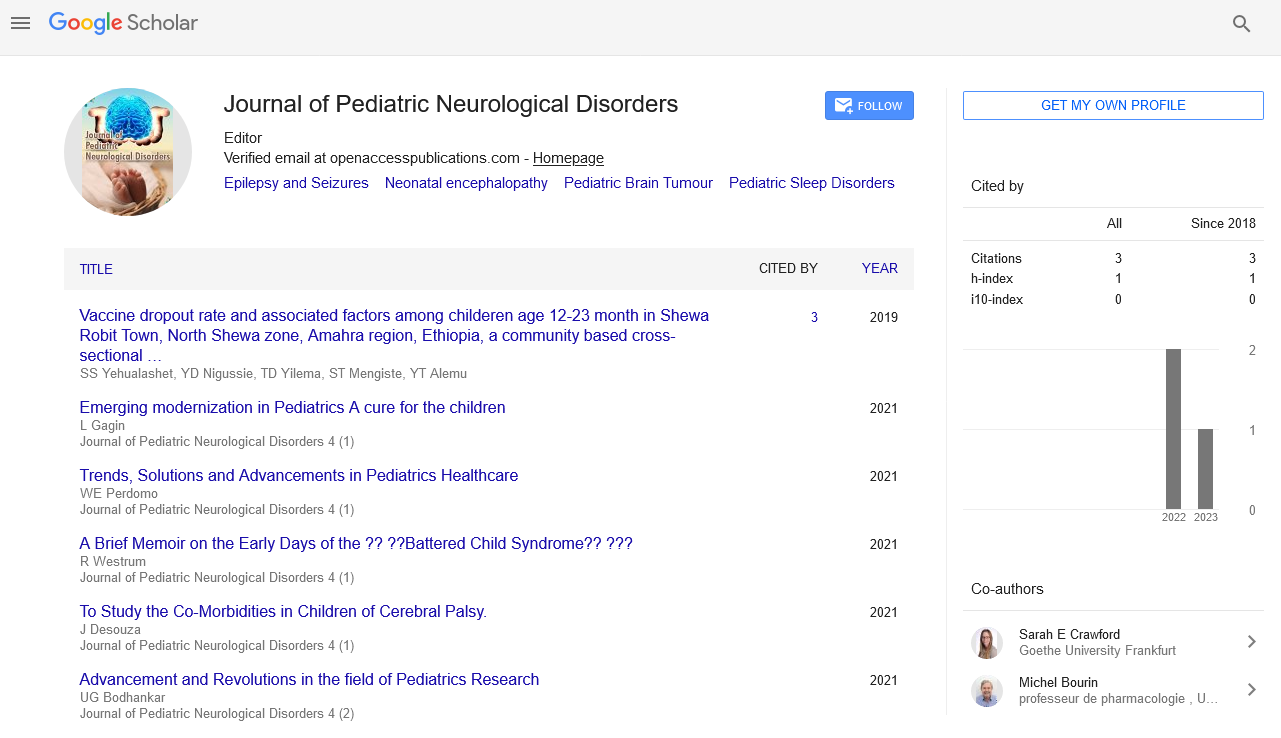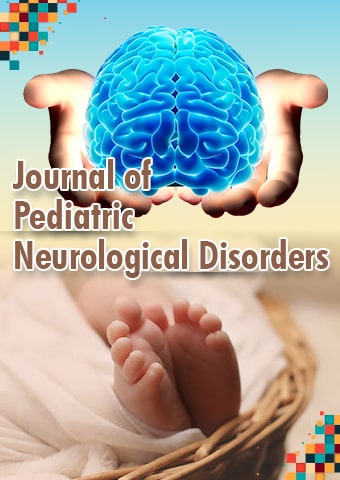Perspective - Journal of Pediatric Neurological Disorders (2022) Volume 5, Issue 3
Associations between the isolation of Klebsiella pneumoniae producing broad-spectrum beta-lactamases.
Aisha Sehari*
Tripoli University, Faculty of Medicine, Tripoli, Libya
Received: 02-Jun-2022, Manuscript No. pnn-22-421012; Editor assigned: 06-Jun-2022, PreQC No. pnn-22- 421012(PQ); Reviewed: 20-Jun-2022, QC No. pnn-22-421012; Revised: 23-Jun-2022, Manuscript No. pnn-22- 421012(R); Published: 30-Jun-2022, DOI: 10.37532/pnn.2022.5(3).54-55
Abstract
Extended-spectrum β-lactamases (ESBLs) are a rapidly evolving group of β-lactamases which share the ability to hydrolyze third-generation cephalosporin. Typically, they derive from genes for TEM-1, TEM-2, or SHV-1 by mutations that alter the amino acid configuration around the active site of these β-lactamases. This extends the spectrum of β-lactam antibiotics susceptible to hydrolysis by these enzymes. An increasing number of ESBLs not of TEM or SHV lineage have recently been described. The presence of ESBLs carries tremendous clinical significance. The ESBLs are frequently plasmid encoded. Plasmids responsible for ESBL production frequently carry genes encoding resistance to other drug classes (for example, aminoglycosides). Therefore, antibiotic options in the treatment of ESBL-producing organisms are extremely limited. Carbapenems are the treatment of choice for serious infections due to ESBL-producing organisms, yet carbapenem-resistant isolates have recently been reported.
Keywords
spectrum beta-lactamases • pneumonia • isolation
Introduction
The first report of plasmid-encoded β-lactamases capable of hydrolyzing the extendedspectrum cephalosporin was published in 1983. The gene encoding the β-lactamase showed a mutation of a single nucleotide compared to the gene encoding SHV-1. Other β-lactamases were soon discovered which were closely related to TEM-1 and TEM-2, but which had the ability to confer resistance to the extended-spectrum cephalosporin. Hence these new β-lactamases were coined extended-spectrum β-lactamases (ESBLs). In the first substantial review of ESBLs in 1989, it was noted by Philipp on, Labia, and Jacoby that the ESBLs represented the first example in which β-lactamase-mediated resistance to β-lactam antibiotics resulted from fundamental changes in the substrate spectra of the enzymes [1].There is no consensus of the precise definition of ESBLs. A commonly used working definition is that the ESBLs are β-lactamases capable of conferring bacterial resistance to the penicillin, first-, second-, and third-generation cephalosporin, and aztreonam (but not the cephamycins or carbapenems) by hydrolysis of these antibiotics, and which are inhibited by β-lactamase inhibitors such as clavulanic acid. For the purpose of this review, the term ESBL will be taken to mean those β-lactamases of Bush-Jacoby-Medeiros group 2be and those of group 2d which share most of the fundamental properties of group 2be enzymes. Risk Factors for Colonization and Infection with ESBL Producers Numerous studies have used a case-control design with which to assess risk factors for colonization and infection with ESBL-producing organisms. Analysis of the results of these studies yield a plethora of conflicting results, likely due to the differences in study populations, selection of cases, selection of controls, and sample size. Nevertheless, some generalizations can be made. Patients at high risk for developing colonization or infection with ESBL-producing organisms are often seriously ill patients with prolonged hospital stays and in whom invasive medical devices are present (urinary catheters, endotracheal tubes, central venous lines) for a prolonged duration. The median length of hospital stay prior to isolation of an ESBL producer has ranged from 11 to 67 days, depending on the study [2]. In addition to those already mentioned, a myriad of other risk factors have been found in individual studies, including the presence of nasogastric tubes, gastrostomy or jejunostomy tubes, and arterial lines, administration of total parenteral nutrition, recent surgery, hemodialysis, decubitus ulcers, and poor nutritional status. Heavy antibiotic use is also a risk factor for acquisition of an ESBL-producing organism. Several studies have found a relationship between third-generation cephalosporin use and acquisition of an ESBL-producing strain. Other studies, which were underpowered to show statistical significance, showed trends towards such an association (the P values in all three studies were between 0.05 and 0.10). Furthermore, a tight correlation has existed between ceftazidime use in individual wards within a hospital and prevalence of ceftazidime-resistant strains in those wards. In a survey of 15 different hospitals, an association existed between cephalosporin and aztreonam usage at each hospital and the isolation rate of ESBL-producing organisms at each hospital [3].
Description
Nosocomial bacterial infections are a major focus of concern for infection control programs. Such infections may occur as an outbreak (or epidemic) or may become established as a regular occurrence (endemic). It is important to be able to determine whether such nosocomial infections are caused by the same clone of organism (monoclonal or oligoclonal outbreaks) because this implies that the organisms are being passed horizontally by some means from patient to patient. This has important infection control implications in that some intervention should be introduced to prevent horizontal transfer of organisms. Conversely, nosocomial infections with organisms of the same species which are not of the same clone (polyclonal outbreaks) may be due to selective pressure imposed by antibiotic use [4].
Conflict of Interests
None
Acknowledgments
None
References
- Sekowska A, Janicka G, Klyszejko C et al. Resistance of Klebsiella pneumonia strains producing and not producing ESBL (extended-spectrum beta-lactamase) type enzymes to selected non-beta-lactam antibiotics. Med Sci Monit, 8(3), BR100-104 (2002).
- Panhotra BR, Saxena AK, Al-Ghamdi AM. Extended-spectrum beta-lactamase-producing Klebsiella pneumoniae hospital acquired bacteremia. Risk factors and clinical outcome.Saudi Med J, 25(12):1871-1876 (2004).
- Sahly H, Aucken H, Benedi VJ et al. Association between extended-spectrum betalactamase production, O serotypes and serum resistance properties in Klebsiella isolates from different European countries. Clin Microbiol Infect. 7, 286(2001).
- Sahly H, Aucken H, Benedi VJ, et al. Impairment of respiratory burst in polymorphonuclear leukocytes by extended-spectrum beta-lactamaseproducing strains of Klebsiella pneumoniae. Eur J Clin Microbiol Infect Dis. 23, 20-26 (2004).

